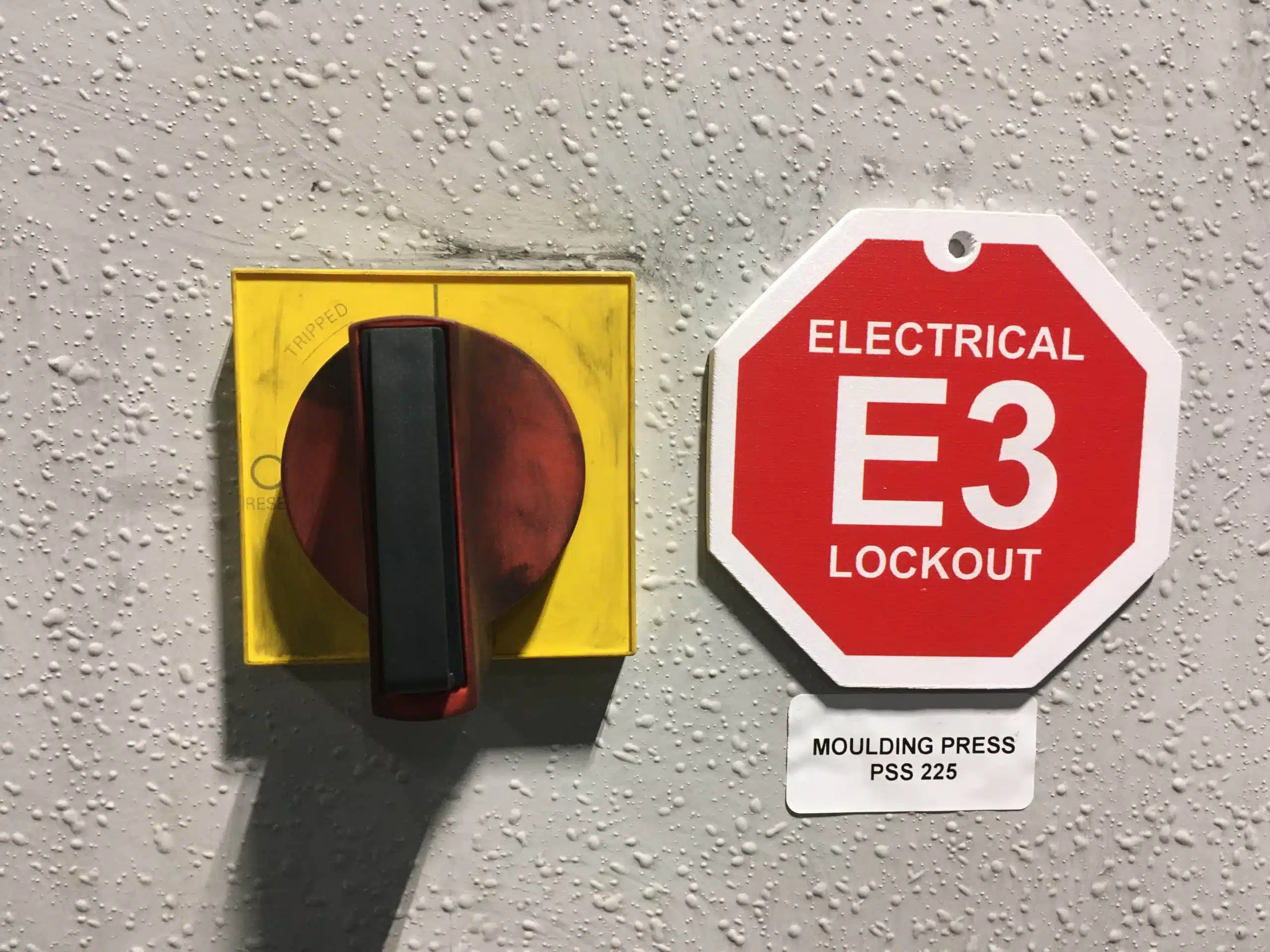Last edit: 03/11/2023

Two major international standards support the use of ‘Zero Energy’ to reduce risk in machinery.
ISO 14118: Safety of machinery – Prevention of unexpected start-up (Latest edition: 2017)
ANSI ASSE Z244.1: The Control of Hazardous Energy Lockout, Tagout and Alternative Methods (Latest edition: 2016)
“Hazardous energy” refers to energies generated by electricity, pneumatics, hydraulics, gravity, chemistry, combustion gases (methane), etc.
The principle of “Zero Energy”
The zero energy principle is simple: when one needs access to a segregated (dangerous) area of a machine, one must isolate and dissipate all energy and prevent another person from re-energising it by installing a lockout. Then place a tag in order to be easily contacted (tagout). Finally, before starting with the operation, make sure that the part to be operated on has been de-energised (testout).
In countries such as the USA, Canada and the UK, Social Law require the application of this technique. This makes the application of Lockout-Tagout very widespread in these countries.
In many other European countries this methodology is indicated in the technical regulations (which are not mandatory). This makes Lockout-Tagout more of an exception than a rule.
Alternative methods
Lockout-Tagout cannot always be used. Consider, for example, access to a hazardous area where a robot has to be programmed by means of a hand-held hand control.
In this case, the operator must rely on the fact that all movements are stopped by a safety loop (interlocks, safety logic, contactors, actuators) that must comply with EN ISO 13849 or other functional safety standards.
This is just one example. There are other methods that ensure an adequate level of safety, provided a proper risk analysis has been carried out first.
This approach is called ‘alternative methods’ in the Z244.1 standard. This is what is stated in the standard:
Lockout or tagout shall be used unless the user can demonstrate an alternative method will provide effective protection for persons. When lockout or tagout is not used, then alternative
methods shall be used only after the hazards have been assessed and risks documented.
This approach is called ‘Other measures to prevent unexpected start-up’ in the ISO 14118 standard. Below is what is stated in the standard.
Where the risk assessment shows that isolation and energy dissipation are not appropriate for an intervention (e.g. manual loading/unloading) , the following measures necessary to prevent unexpected start-up shall be taken as appropriate:
– measures taken in the control system to prevent the generation of start commands from unintended
actuations of a start control device or other parts (e.g. sensors, power control elements) , from failures
in or from external influences (vibration, shocks, disturbances of the power supply) (see 6.2);
– measures taken at level A, B or C of the machine (see Figure 1) or at mechanical disconnection
elements or at moving-parts (immobilization) , to prevent unintended start commands resulting in
an unexpected start-up;
-measures implemented in the control system to automatically stop the hazard-generating part of
the machine before a hazardous event can arise from an unexpected/unintended start-up of this
part.
